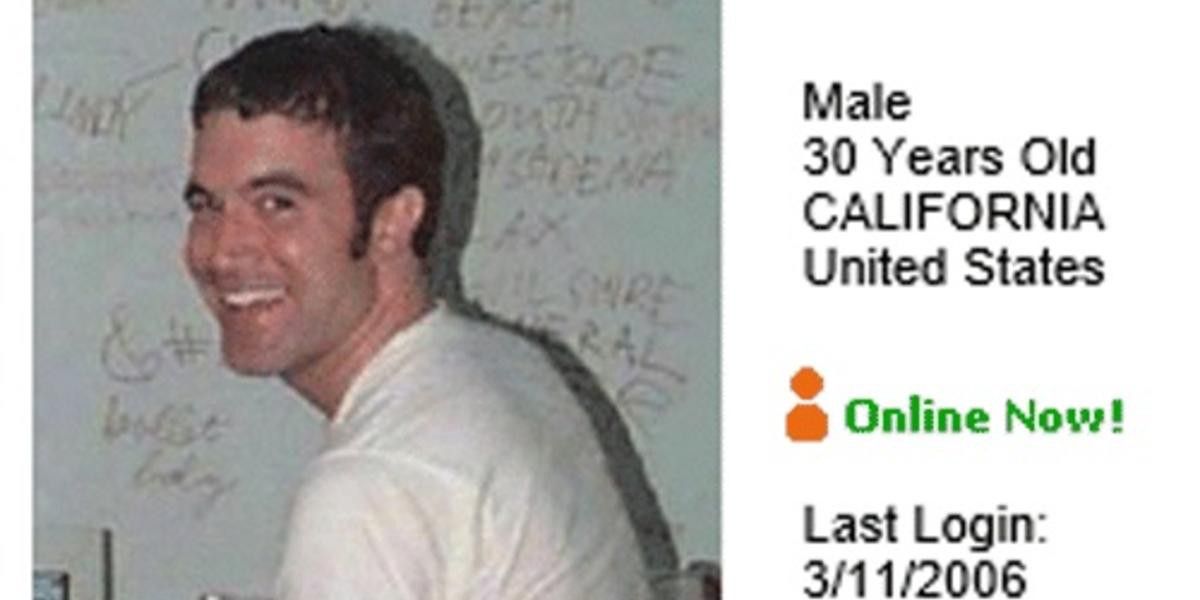One upon a time, in the early 2000s, a small company had a little HR issue: one of their employees was a bit of a weirdo. He was, more to the point, really weirding out one of his coworkers, and she said she felt uncomfortable coming in to work. HR didn’t want to let him go, so they came up with a compromise: they told him that when she was in the office, he ought to work from home.
You might want to keep an eye out for this guy. Here’s his picture:

Tom’s extreme, but we see the pattern elsewhere. Zuckerberg has given some uncomfortable interviews, especially in the early days; one version of the Twitter founding myth was that Dorsey was hitting on a coworker when she introduced him to the idea of status updates via text messaging. (Nobody has written the ending of that story, so I assume she later introduced him to the concept of ghosting.)
There seems to be a pattern here. Intuitively, you could expect the opposite: to understand social media, you need to be good at picking up on social cues and handling social interactions. At the beginning, a social network is a place where friends hang out, and that’s going to be a lonely place if you don’t have many friends.
But that elides something important: people who are naturally socially competent don’t understand social interactions. They just do them. In AI, there’s a concept called Moravec’s Paradox: the idea that it’s relatively easy to teach AIs to do things humans think of as hard, and hard to teach them things humans think of as easy. Computers have been able to get good grades on calculus exams for decades, but it’s only recently that they’ve learned how to distinguish between a smile and a grimace.
The reason is that for more complicated tasks, we have an explicit model: you build up calculus from simple abstractions, and the simplest of these can be represented as integers and arithmetic operations, which computers can handle just fine. You can’t describe the process you use to determine whether someone is faking an emotion or really feeling it. (Kids help, actually: two-year-olds know you respond to their emotional state, but they’re terrible actors.)
To an extreme introvert, or to someone on the Asperger’s spectrum, social cues are easy to miss because they’re subtle. So awkward people learn to explicitly model them; they develop a body of theory around how to distinguish polite boredom from intense interest (I used to firmly believe that “Oh, yeah,” and “I see” were 100% reliable indicators that I should keep talking), or how to differentiate intellectual interest from outrage (the answer to “Wait, really?!” should not necessarily be “Yeah, and furthermore…”).[1]
Having an explicit rather than implicit model of human behavior is generally a liability. In Kahneman’s terms, you’re using System Two to patch over deficiencies in System One. But this has one advantage: it lets you break down interactions into their atomic components. So when the same interactions happen over a different medium — friendship, hatred, jealousy, love; all of these have moved online in a big way — the System Two people are working off a formal spec, while System One people are looking at a black box.
The best evidence for this is the fact that most of the awkward-founder stories I’ve mentioned are a decade old. If you watch interviews with these executives today, you hear a polished, well-rehearsed, in-control executive. They’re not naturals, but they practiced, and practice is just the art of putting effort into making something look effortless. If you’re a natural public speaker and a good conversationalist, you’re probably already at the ceiling for your skills, but if you’re not a natural, you’ll consistently improve — you’re not just doing things, you’re trying things and seeing what works.
There are a few historical figures who also fit this template. If you read Ronald Reagan’s diaries, you’ll notice that he was a very weird guy who didn’t especially like people. His favorite dinner guest was television. But he taught himself charisma — a one-on-one conversation might be painful, but a movie audience or a crowd is just an abstraction. And the result is stuff like this.
It might seem like a liability if social cues and norms are opaque to you. But think of it this way: if they weren’t opaque, you wouldn’t see them.

 Byrne Hobart
Byrne Hobart